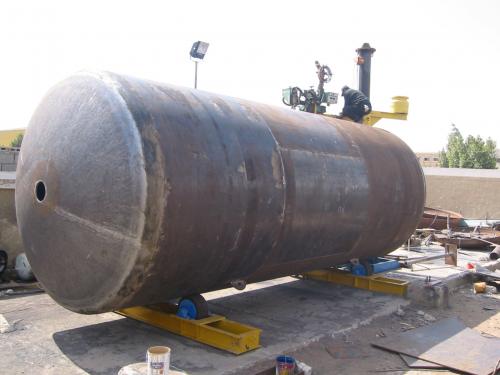Safe shut-off and release of pressure lines

No plant
operator would like to risk an accident with steam or hazardous liquids. In
order to maintain systems requiring monitoring such as pressure vessels or
pipes, they must first be shut off, relieved and emptied. With a new fitting
that combines shut-off valves and expansion ports, it becomes easier and safer
for the employee.
Pressurized
lines must be securely shut off and vented before repair. The Safebloc
simplifies this process
Attention
hot steam! When steam or hazardous fluids escape from pipes or boilers and
injure people, this is a scenario every operator wants to avoid. Although it is
necessary to comply with a number of regulations for maintenance, but there is
a problem in the construction of the shut-off device. As a rule, it consists of
several valves which must be actuated in succession so as not to injure each
other. Easier and safer is a fitting that combines shut-off valves and
expansion port in one device.
Occupational
safety is paramount
In order to
protect employees and to prevent accidents, occupational safety plays an
ever-increasing role in the operation of systems requiring monitoring.
According to the German Ordinance on Industrial Safety and Health (BetrSichV),
these systems requiring monitoring include, in addition to steam boilers and
pressure vessel systems, pressurized pipes which carry dangerous or hot media.
Maintenance of such equipment is always associated with increased risks and
hazards to the employees. It is therefore not without reason that relevant
regulations require appropriate protective measures. For example, the accident
prevention regulation "Thermal Power Plants and Heating Plants" (BGV
C14) in §3 (2) requires facilities for the operation and maintenance of plants
and plant components that ensure the safe execution of this work. This
requirement is met in practice by carrying out the following principal steps
before working on pressure-bearing plant components:
·
shut
off on all sides,
·
securing
the shut-off valves,
·
emptying
and aerating the equipment,
·
secure
the valves against unauthorized operation,
·
if
necessary, rinse thoroughly and
·
Determine
emptying and depressurisation or concentration.
·
Safe
shut off
In the
simplest and most dangerous case for the employee, the system part to be
serviced is sealed off with simple shut-off valves and the system is released
by loosening a flange connection. That this approach is dangerous, may be
undisputed. Going one step further, two shut-off valves are connected via a
T-piece, with a third shut-off valve pushing off the remaining free connection
on the T-piece.
During
normal operation of the system, the valves 1 and 2 are open and the expansion
valve 3 is closed. Before maintenance work, the valves 1 and 2 are closed first
and then the expansion valve 3 is opened. Of course, it should be ensured here
that the expansion line following the valve 3 is guided to a safe location. Now
valve 2 is opened, and the pressurized medium can relax via the valve 3. If
pressure is reached, valve 3 is closed and the double-secured system can now be
safely repaired.
Shut off and
relax in one
Post Your Ad Here
Comments